Cash
Through a current account
In installments through the PIO fund for pensioners
Electronic card (Visa, Master, Dina, etc.)
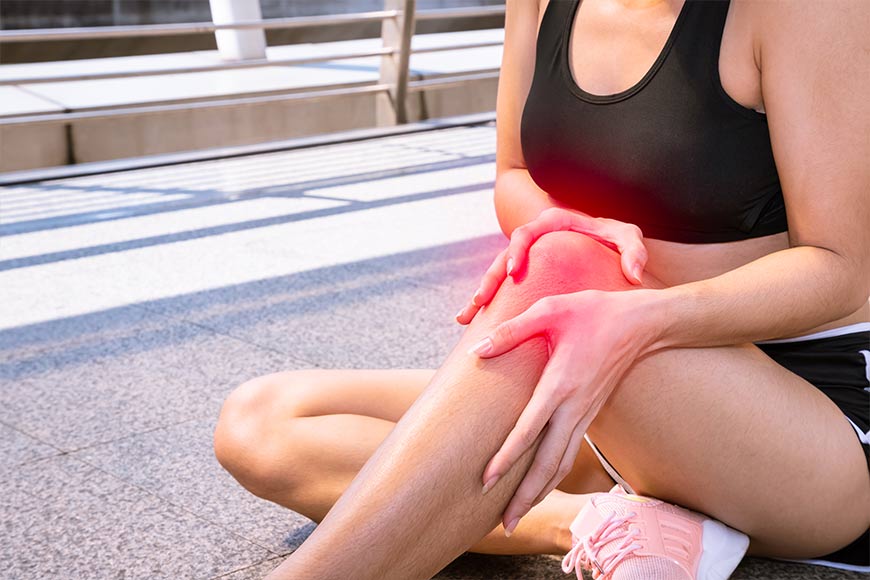
Fokus Fizical 100% guarantees fast and effective healing
Super DISCOUNT! 20% on all therapies in September!
Do not treat yourself over the Internet! Make an appointment via Viber now!
Knee pain is one of the most common issues that can significantly impact a person's daily life and overall functionality. The knee joint, which connects the femur, the lower leg, and the patella, is essential for leg movement and stability. Given its crucial role in activities such as walking, running, and climbing stairs, the knee is particularly vulnerable to a variety of injuries and conditions.
Knee pain can arise from numerous sources, including injuries caused by impact, falls, or strain, as well as degenerative diseases like osteoarthritis. Depending on the underlying cause and severity, the pain may be mild and intermittent, or it can become chronic, leading to serious disruptions in normal activities. This may result in limited mobility, difficulty walking, and even an inability to complete everyday tasks.
Pain in the knee can manifest itself in different ways, depending on the cause, the severity of the injury or disease, as well as the duration of the symptoms. Individuals can experience different forms of pain and discomfort, and symptoms can range from mild, occasional pain to pronounced, chronic complaints that significantly affect daily activities. These symptoms can vary in intensity, and most often occur in combination with swelling, reduced mobility and changes in knee function. It is important to pay attention to specific symptoms in order to timely diagnose the cause and begin adequate treatment.
Timely recognition of knee pain symptoms is essential for effective treatment and prevention of more serious problems. If the symptoms last for a long time or worsen, it is recommended to consult a specialist doctor in order to determine the cause and undertake appropriate treatment.
Knee pain can arise from various causes, including injuries, degenerative diseases, infections, and other medical conditions. Each of these causes affects different structures of the knee joint, such as bones, ligaments, tendons, menisci, and surrounding tissues. Understanding the potential causes of knee pain is crucial for achieving an accurate diagnosis and selecting appropriate treatment.
Understanding the underlying cause of knee pain is essential for proper diagnosis and for determining the most effective treatment, which may include rest, physical therapy, medication, or even surgical intervention.
The treatment of knee pain varies based on the underlying cause, the severity of symptoms, and the specific circumstances of each patient. Treatment approaches can either be conservative or surgical, with the primary goals being to relieve pain, enhance mobility, and prevent further damage.
Conservative Treatment:
Surgical Treatment:
When conservative methods fail to yield the desired results or when significant damage is present, surgical options may be necessary:
Meniscus Transplant: In cases where the meniscus is completely destroyed, a donor meniscus transplant may be performed. This procedure is rare but can be particularly effective in younger p atients.
Prevention of Knee Injuries:
While it may not be possible to fully prevent injuries, there are several strategies to minimize the risk:
Addressing knee pain requires a timely and individualized approach, starting with an accurate diagnosis and followed by appropriate treatment. If you experience pain, swelling, or difficulty moving, it is crucial to consult a specialist to prevent long-term complications. Our expert team utilizes state-of-the-art techniques to help you recover quickly and regain optimal knee functionality.
In our practice, every patient is treated as an individual, since treatment plans are tailored to specific symptoms and needs. Our goal is not only to accelerate your recovery but also to provide long-term prevention strategies.
What are the most common causes of knee pain?
The most common causes are injuries, arthritis, overuse and injuries to ligaments or meniscus.
Is knee pain always serious?
No, knee pain can be temporary and caused by minor injuries, but if it lasts for a long time or is very severe, you should seek medical help.
How can I reduce knee pain at home?
It is recommended to rest, use cold compresses, take painkillers (such as ibuprofen) and avoid strenuous activities that burden the knee.
When should you seek medical help for knee pain?
If the pain lasts longer than a few days, if it is accompanied by swelling, redness, or if you have problems with walking or knee stability.
What activities should I avoid if I have knee pain?
Activities that require a high load on the knees, such as running, jumping or climbing stairs, should be avoided. Instead, you can focus on light exercises and stretching.
Can physical therapy help with knee pain?
Yes, physical therapy is very useful for strengthening the muscles around the knee, improving mobility and reducing pain.
Cash
Through a current account
In installments through the PIO fund for pensioners
Electronic card (Visa, Master, Dina, etc.)
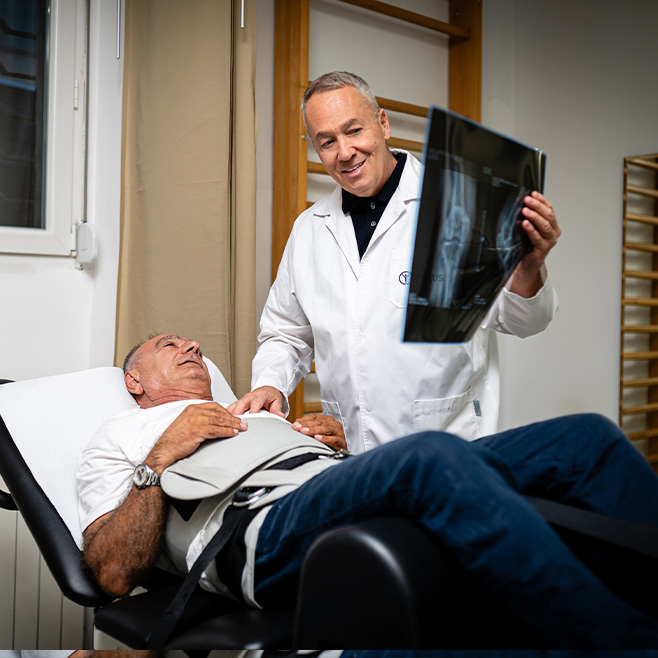
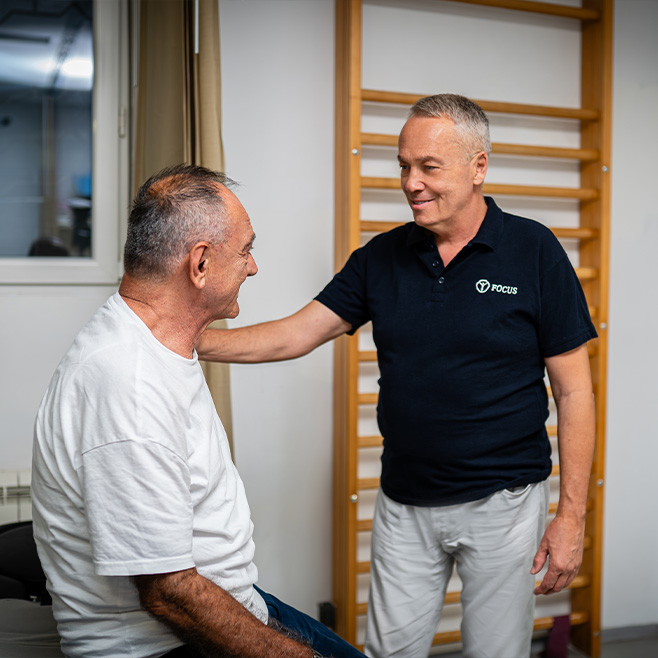
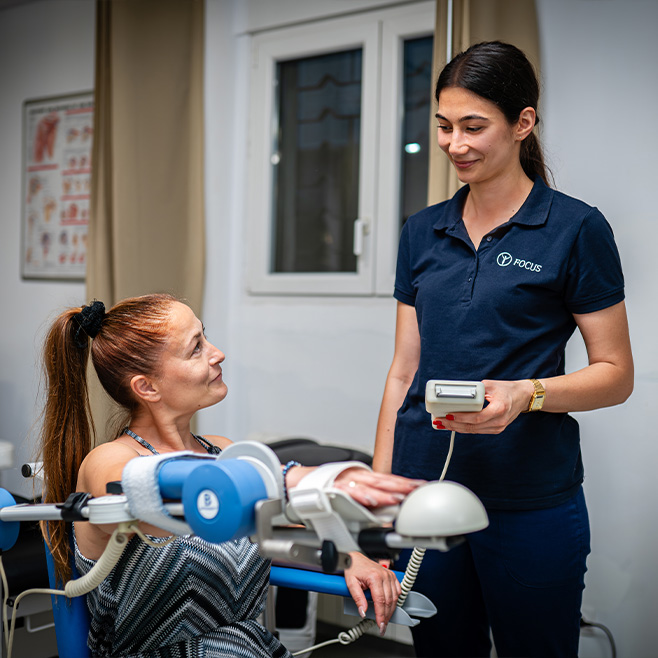
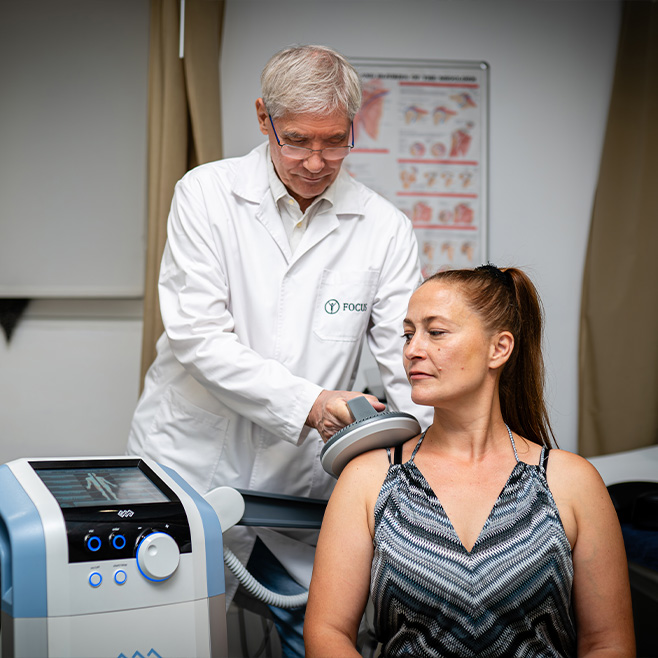
See the experiences of our satisfied patients who successfully recovered with the help of our physical therapy. Get acquainted with the testimonies of patients who faced various joint injuries, sports knee injuries, back injuries and similar problems, which we quickly, efficiently and successfully treated.
Aesthetic surgery
Focus Fizikal is a leading private clinic for physical therapy in Belgrade. For more than 10 years, we have been providing high-quality services that enable quick recovery and healing of our patients.

For all our current and future patients, we have made it possible to schedule an appointment online.